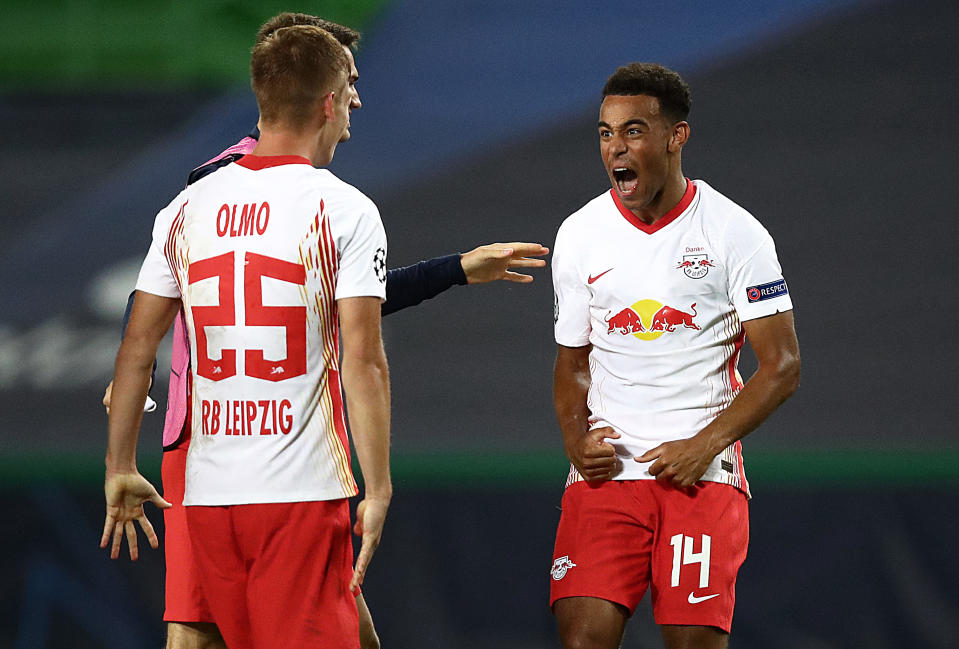There's something undeniably (and quantifiably) different about this USMNT 'golden generation'
Back in late February, just before the coronavirus pandemic hit, former United States men’s national team and current New England Revolution coach Bruce Arena was sitting in a hotel lobby, discussing the USMNT player pool, when it was suggested to him that the current crop of American youngsters beginning to break through at the highest levels of the sport marked an unprecedented development in the country’s soccer history.
“You’re completely wrong,” Arena said. “You don’t think we ever had young players playing in clubs in Europe? We’ve had good players before. Players from other countries are getting sold to big clubs, they’re not having parades over it.
“You idiots hype up every kid that steps on the field as the next star,” he added, speaking of the media. “It’s ridiculous.”
Arena, of course, is the wise-cracking Brooklyn-born coach who took the USMNT within a whisker of a World Cup semifinal in 2002 — the USMNT’s best showing in the event in the last 90 years — and also the man who was at the helm in 2017 when an aging American squad failed to qualify for the planet’s greatest sporting party for the first time in more than three decades. In other words, he’s seen it all, including countless prodigies who in some cases failed to become even journeymen pros, let alone world beaters.
Yet in the almost-three years since the catastrophe in Couva, Trinidad and Tobago, where an unthinkable loss to the hosts ushered in the lowest moment in program history, a number of blue-chip talents have emerged as regular contributors in some the best leagues in the world, an obvious sign of hope for the future.

Christian Pulisic, 21, was nominated for the Premier League’s best young player award following his often spectacular first season with English titan Chelsea. Borussia Dortmund’s Giovanni Reyna, the 17-year-old son of two-time U.S. World Cup captain Claudio Reyna and former U.S. women’s national teamer Danielle Egan, became the youngest American ever to appear in the UEFA Champions League a few days before Arena spoke to Yahoo Sports.
And last week, 21-year-old Tyler Adams scored the most significant goal ever by an American at club level, one that gave RB Leipzig a last-gasp 2-1 win over Atletico Madrid and sent it to Tuesday’s Champions League semifinal against Paris Saint-Germain. If he plays in that match, as expected, Adams will become just the second Yank to appear in the final four of Europe’s top club competition, after DaMarcus Beasley with PSV Eindhoven in 2005.
Three players does not equal a golden generation, to be sure. But there are other promising signs. Another 21-year-old, Schalke’s Weston McKennie, has been a starter in the German Bundesliga for three seasons and has played in the knockout stage of the Champions League. Striker Josh Sargent, just 20, already has almost 40 Bundesliga appearances under his belt. And last September, 19-year-old Ajax fullback Sergino Dest became one of just two American teenagers to start a Champions League match, joining Pulisic, who did it with Dortmund at 17.
This? This is entirely new. With all due respect to Arena, the U.S. has never had this many players, this young, playing regularly with top-flight European clubs as relevant as some of the ones mentioned above. The country has had good players before, but it’s never had six of them between the ages of 17 and 21 who are key players for teams competing in the Prem, Bundesliga or Champions League.
Arena is right to preach caution with young players. Even diehard USMNT fans might not remember or know that Manchester United, during its height in the 1990s and 2000s, was home to young Americans Kenny Cooper, Jovan Kirovski, John Thorrington, Jonathan Spector and Tim Howard. Only Howard ended up playing more than a handful of games for the club. Cooper, Kirovski and Thorrington never cracked the first team or made a U.S. World Cup roster.
More recently, prospects such as Joe Gyau, Julian Green and Matt Miazga saw minutes with Dortmund, Bayern Munich and Chelsea, respectivekly, before eventually finding their level in lower leagues.
“What people don’t realize is the big clubs in the world invest millions and millions of dollars into these players hoping that one out of 10 make it, or one out of 20,” Arena said. “It’s a crapshoot.”
It’s true. Perhaps the biggest reason the U.S. failed to qualify for Russia 2018 was because of the so-called lost generation of U.S. players born in the early- to mid-’90s who failed to pan out as many hoped, as difference-makers in their prime able to bridge the gap between a then-teenage Pulisic and aged veterans like Howard and Clint Dempsey.
But with Pulisic, Adams and Reyna leading the way as regular contributors with three of Europe’s most prominent teams, this new cohort of U.S. players has already hit some uncharted data points. That’s all it is for now; what happens day-in, day-out over the next decade — not least their ability to stay healthy — will ultimately determine their legacies.
But hey, every golden generations has to start somewhere.
More from Yahoo Sports:


